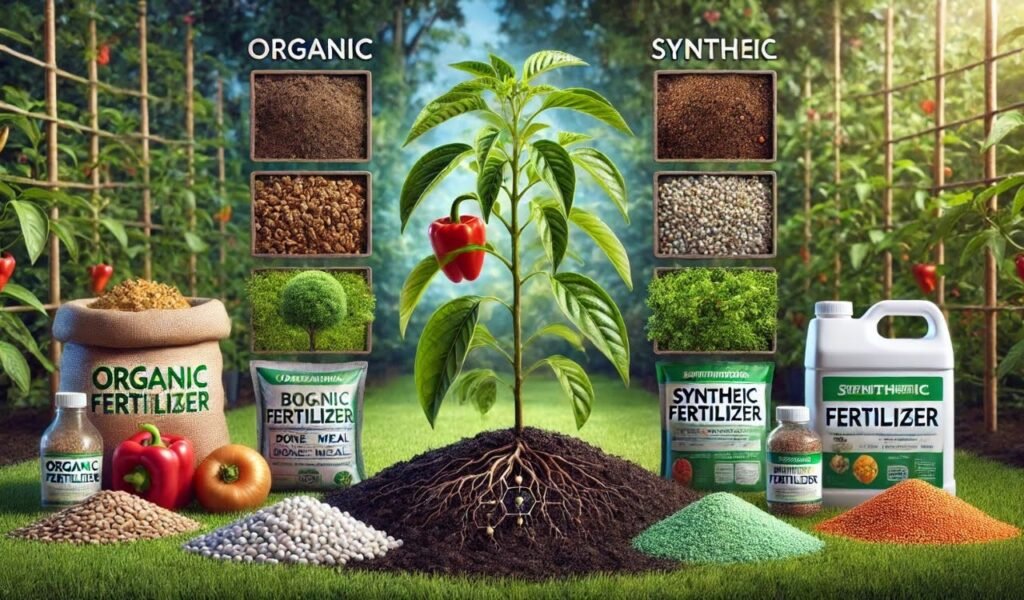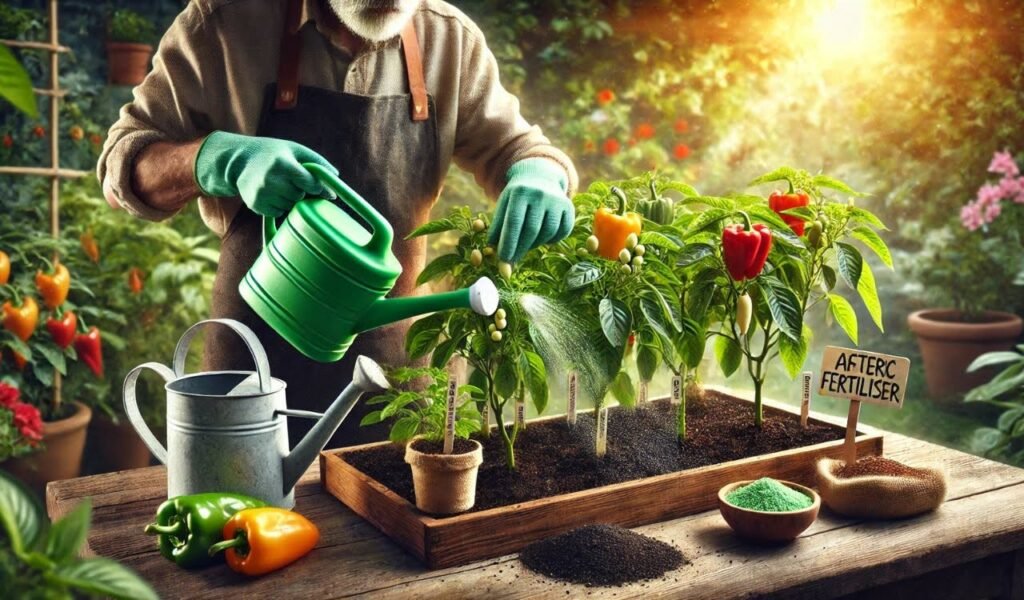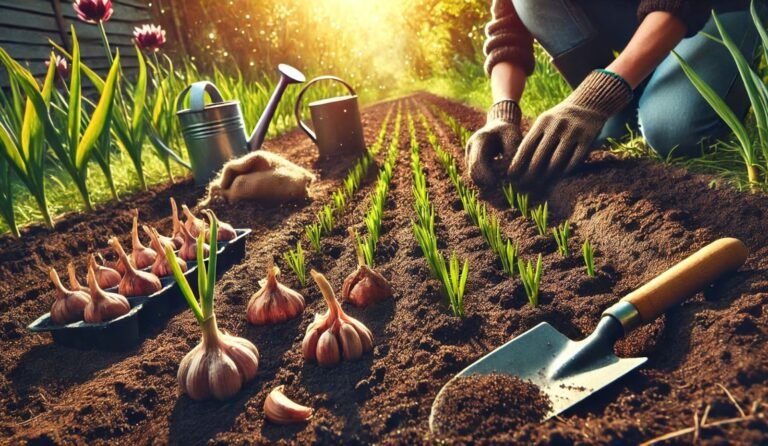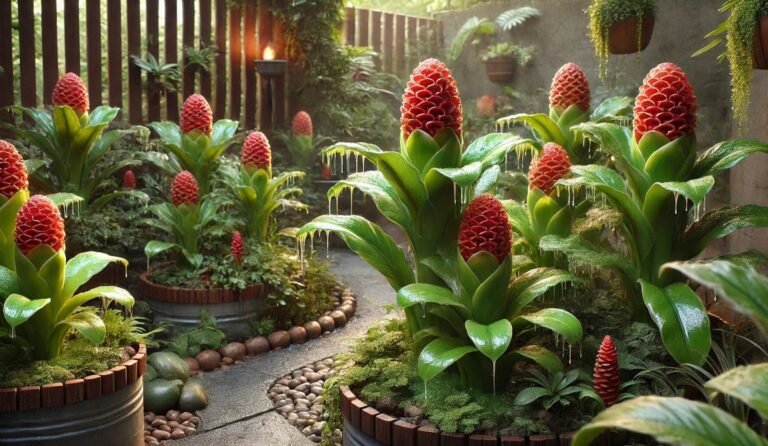Best Fertilizer for Pepper Plants to Boost Growth & Yield
The best fertilizer for pepper plants can mean the difference between a weak, struggling plant and a thriving, pepper-loaded powerhouse. Want bigger, juicier peppers? It all comes down to feeding them right. But with so many fertilizers out there, which one actually works? Don’t worry—I’ve got you covered. In this guide, you’ll learn exactly what your pepper plants crave and how to keep them happy all season long. Let’s grow!
Why Do Pepper Plants Need Fertilizer?
Just like people need a balanced diet to stay healthy, plants need a proper mix of nutrients to grow well. Peppers, in particular, are heavy feeders, meaning they require a good amount of nutrients to reach their full potential. Without proper fertilization, you may end up with weak plants, poor fruit production, and peppers that lack flavor.
Macronutrients: NPK (Nitrogen, Phosphorus, Potassium)
Best fertilizer for pepper plants: Pepper plants, like all crops, depend heavily on three primary macronutrients: nitrogen (N), phosphorus (P), and potassium (K). Each plays a vital role in the health and productivity of the plant:
Nitrogen (N): Supports lush, healthy foliage in pepper plants. Nitrogen aids in the synthesis of proteins and chlorophyll, which are essential for photosynthesis and the plant’s ability to grow and thrive. Adequate nitrogen levels ensure that pepper plants have the energy to produce large, vibrant fruits.
Phosphorus (P): Helps pepper plants establish a strong root foundation that supports both the plant’s stability and its ability to uptake water and nutrients. It also plays a role in energy transfer and photosynthesis, making it critical for fruit health and growth.
Potassium (K): Known for its role in water and nutrient absorption, it helps strengthen plant cells, aids in the synthesis of proteins and starches, and regulates metabolic activities. It’s essential for ensuring proper fruit development and the plant remains hydrated and disease-resistant.
These macro-nutrients abbreviated as N, P, and K play a prominent role in plant growth. Understanding the order of these nutrients will come in handy when purchasing the best fertilizer for pepper plants.
Additional Nutrients Pepper Plants Need
Secondary Nutrients
In addition to the three key nutrients we explained above, there is a collection of additional nutrients your pepper plants will need. Pepper plants are partial to three secondary nutrients which are Calcium, Magnesium, and Sulfur, which the plants will need in smaller quantities.
Calcium helps other nutrients get into the plant and creates enzymatic reactions. The calcium pectinate helps bond the plant’s cell walls together, and the cells in leaves and peppers. If the plant lacks calcium or if the pepper pods grow too fast for the plant to supply enough calcium, the bottom of the pepper plant begins to rot as a result of the cell walls collapsing.
Magnesium is responsible for the creation of chlorophyll, the green pigment that’s crucial in photosynthesis. It also helps create ATP and calcium pectinate, which glues the cell walls together. With Magnesium, this will allow plants to better take in valuable nutrients (like nitrogen and phosphorus) and greatly improves a plant’s ability to produce flowers and peppers.
Sulfur, the last secondary nutrient, is best known for its ability to control insects and fungal diseases, but it’s also necessary to produce amino acids, vitamins, and enzymes.
Trace nutrients
Pepper plants benefit more than these six nutrients, just as people benefit from eating more than six types of food. The other twelve nutrients that are supplied by soil and strengthened by fertilizer are:
Boron – necessary for flowering and cell formation
Copper – important in photosynthesis and reaction of enzymes
Iron – goes into cytochromes, which are necessary for plant transpiration. This also helps the plant make chlorophyll
Manganese – this mineral forms chlorophyll and enzymes, and creates chloroplasts which are the tiny bodies found only in the plant cell that makes food and contain the molecules of chlorophyll. Manganese is important in plant respiration.
Molybdenum – the mineral goes into creating enzymes and amino acids
Zinc – this activates enzymes and allows the reading of the plant’s genetic code.
Healthy soil already contains these nutrients, and if it doesn’t, there are available products that will do the job. Getting the nutrients into the soil for the lawn or garden is part of the task of fertilizing it and keeping it healthy throughout the year!
Organic vs. Synthetic Fertilizers: Which One is Best?

When choosing a fertilizer for your pepper plants, you’ll come across two main types: organic and synthetic fertilizers. Each has its pros and cons, so it’s important to understand how they work before making a decision.
Organic Fertilizers: Slow but Sustainable
Organic fertilizers come from natural sources like compost, manure, and plant-based materials. They release nutrients slowly as they break down, improving soil health in the long run. Many organic fertilizers also contain beneficial microbes that help pepper plants absorb nutrients more efficiently.
Common organic fertilizers for peppers include:
Compost: A rich mix of decomposed organic matter that slowly feeds the plant and improves soil structure.
Fish Emulsion: A liquid fertilizer made from fish byproducts, great for giving young plants a nitrogen boost.
Bone Meal & Blood Meal: Bone meal provides phosphorus for strong root growth, while blood meal is an excellent source of nitrogen.
Worm Castings: These improve soil aeration and provide essential nutrients in a slow-release form.
One of the biggest advantages of organic fertilizers is that they nourish the soil over time rather than just feeding the plant temporarily. However, they do take longer to show results compared to synthetic fertilizers.
Synthetic Fertilizers: Fast and Effective
Synthetic fertilizers are man-made and designed to provide a quick nutrient boost to plants. They come in various forms, including water-soluble powders, slow-release granules, and liquid fertilizers. For peppers, balanced fertilizers like 10-10-10 or 5-10-10 work well, providing a steady supply of nitrogen, phosphorus, and potassium.
Water-soluble fertilizers such as Miracle-Gro or Jack’s Classic 20-20-20 are great for a quick nutrient fix, especially if you notice your plants struggling. The downside of synthetic fertilizers is that overuse can lead to nutrient imbalances and soil degradation over time. Since they provide an immediate boost, there’s also a higher risk of over-fertilization, which can cause problems like excessive leaf growth at the expense of fruit production.
If you’re growing peppers in containers or raised beds, synthetic fertilizers can be useful because they deliver nutrients quickly to plants with limited soil resources. However, if you want a long-term solution that improves soil health, organic fertilizers are the way to go.
Best Fertilizers for Pepper Plants (Product Recommendations)
Choosing the best fertilizer depends on your soil condition, whether you’re growing in pots or the ground, and how much effort you want to put into fertilization. Here are some of the best options available:
- Dr. Earth Organic Tomato, Vegetable & Herb Fertilizer – A great organic option with a mix of beneficial microbes and mycorrhizae that enhance soil health.
- Miracle-Gro Water Soluble Tomato Plant Food – A quick-acting synthetic fertilizer that boosts growth and pepper production.
- Jobe’s Organics Vegetable & Tomato Fertilizer Spikes – Slow-release spikes that provide nutrients gradually, making them great for container gardening.
- Espoma Tomato-Tone Organic Fertilizer – Contains calcium to prevent blossom end rot and is perfect for steady, healthy growth.
- Fox Farm Big Bloom Liquid Fertilizer – An organic liquid fertilizer that encourages flowering and fruit production.
When using any fertilizer, it’s important to follow the instructions carefully to avoid over-fertilizing, which can do more harm than good.
How to Fertilize Pepper Plants Correctly

When to Fertilize
The best approach is to fertilize in stages depending on the plant’s growth phase:
Seedlings (First 3-4 Weeks): Use a diluted liquid fertilizer like fish emulsion or a balanced 10-10-10 fertilizer at half strength every two weeks.
Vegetative Growth (Before Flowering): Increase nitrogen intake to encourage strong leafy growth. Apply a balanced fertilizer every 10-14 days.
Flowering & Fruit Development: Switch to a low-nitrogen, high-phosphorus fertilizer (like 5-10-10) to encourage more flowers and fruit rather than just leaves.
Application Methods
You can apply fertilizer in different ways depending on your preference and setup:
Soil Application: Granular fertilizers should be mixed into the soil around the plant’s base.
Foliar Feeding: Some fertilizers, like Epsom salt sprays (for magnesium), can be applied directly to the leaves for quick absorption.
Slow-Release Fertilization: Using spikes or pellets can provide a steady supply of nutrients over time.
Tips on Using Your Pepper Plant Fertilizer
To get the most out of your fertilizer, it’s important to use it correctly. Here are some expert tips to ensure your pepper plants absorb nutrients efficiently:
- Start with a Soil Test – Before applying any fertilizer, test your soil to determine nutrient levels. This prevents over-fertilization and ensures you’re providing only what your peppers need.
- Apply Fertilizer in Stages – Young pepper plants need nitrogen for leafy growth, but once they start flowering, switch to a phosphorus-rich fertilizer to encourage fruit production.
- Use Fertilizer Moderately – More isn’t always better! Over-fertilizing can cause excessive foliage growth and fewer peppers. Stick to recommended dosages and schedules.
- Water After Fertilizing – Always water your plants after applying fertilizer to help distribute nutrients into the soil and prevent root burn.
- Foliar Feeding for Quick Fixes – If your plants show signs of nutrient deficiencies (yellowing leaves, slow growth), foliar feeding with a liquid fertilizer can provide a quick boost.
- Avoid Fertilizing During Extreme Heat – Fertilizing during high temperatures can stress plants. It’s best to apply fertilizer in the early morning or late evening.
- Use Mulch to Retain Nutrients – Adding a layer of mulch around your pepper plants helps retain moisture, prevents nutrient leaching, and keeps the soil healthy.
- Adjust Fertilization Based on Plant Response – Observe how your plants react to fertilization. If you notice excessive leafy growth but few flowers, cut back on nitrogen. If fruit production is slow, add more phosphorus.
FAQ
What is the best fertilizer for pepper plants?
A balanced 10-10-10 for early growth, then a low-nitrogen, high-phosphorus fertilizer for fruiting. Organic options like compost and fish emulsion work well.
When should I fertilize my pepper plants?
Start two weeks after transplanting, then fertilize every 10-14 days during growth and fruiting.
Can I use organic fertilizer for pepper plants?
Yes! Compost, fish emulsion, bone meal, and worm castings are great organic choices.
How do I prevent blossom end rot in peppers?
Use calcium-rich fertilizers like bone meal or crushed eggshells and keep soil evenly moist.
Can I over-fertilize my pepper plants?
Yes! Too much nitrogen leads to lush leaves but fewer peppers. Stick to recommended amounts.
Is Epsom salt good for pepper plants?
Yes! It provides magnesium, which helps with nutrient absorption and plant health.
What’s the best fertilizer for potted pepper plants?
Use a slow-release fertilizer or liquid feed every 10-14 days, like 5-10-10 or compost tea.
Final Thoughts
Fertilizing your pepper plants properly is the key to getting bigger, healthier, and tastier peppers. Whether you choose organic compost or a synthetic blend, the goal is to provide the right nutrients at the right time to help your plants thrive. By following these guidelines, you’ll be well on your way to enjoying a productive pepper harvest! Happy gardening!







